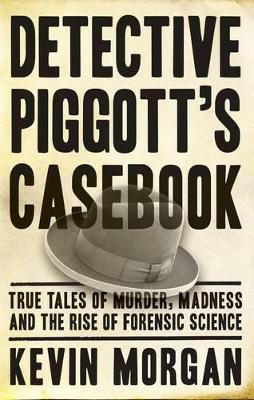
Welcome to hell, a world at war. The streets of Melbourne no longer a tidy grid but fractured with laneways like cracks in old varnish, a hotchpotch of chaos - of shanties and factories, woodpiles and chimneys - the city smouldering under its bludgeoned sky. Here, crime flourishes, the damaged fester and the wicked plot: a circle of the damned into which strides Frederick Piggott - enforcer of the King's law. Detective Piggott's Casebook presents for the first time the riveting inside facts on nine of the most important Victoria Police investigations of the early 20th century, drawing on the long-hidden personal papers of forensic pioneer, Frederick Piggott (1874-1962). Likened by his contemporaries to Sherlock Holmes, Piggott's investigations - conducted in the shadow and aftermath of World War I - covered the state's most gruesome and mysterious crimes, including the notorious schoolgirl murders of Alma Tirtschke and Irene Tuckerman, and the horrific 'headless boy' and 'Yarra baby killer' cases.
These uncensored accounts expose the graphic and often perplexing nature of the period's criminal investigation work and point to the dawn of a new era in Australian crime detection - the rise of forensic science.
This is a true-crime novel, based on the case books of a high-profile Victorian policeman named Fredrick Piggott who served in country Victoria and Melbourne during the early part of the 20th century.
I enjoyed Detective Piggott’s Casebook. I was one of those kids who quite willing read the ‘Casebook of Forensic Medicine’ in high school. Not because I had to, but because I wanted to. I enjoy the psychology of police work and crime detection, and also like to learn about the history of forensic science. This book highlighted some of the first uses of blood-spatter analysis and crime scene photographs in crime solving in Australia.
I particularly liked the fact that this book didn’t just shine the light on the good side of things, nor did it just cover the good things Piggott did. It gave you a fairly decent analysis of what was not so great about some of the detective work back then, and how it certainly has changed a lot now. It was also interesting to see the historical side of things, going from travelling by train and horse, to eventually all stations having a police car.
If you enjoy true-crime novels, and also enjoy the history of forensics then I would recommend giving this book a go.
Reading updates
-
Started reading
-
6 May, 2013:
Finished reading
-
6 May, 2013:
Reviewed
